Finding Queer Belonging in Ancient Mythology
Yet, we look at the myths of ancient civilisations and we see this can’t possibly be true. In these tales the ability to transcend gender and love without boundaries is seen as sacred. Queer Gods and Goddesses were worshipped, with their differences seen not as a reason for hate, but as a symbol of power and beauty.
What’s more, although on the surface they may seem to be just stories, the study of mythology suggests they reflect the deep-rooted beliefs of a society. Mythologist Devdutt Pattanaik describes them as "[capturing] the collective unconsciousness of a people", these myths act as a reminder that queer people have always existed, and our magnificence is not a new or modern concept.
In these tales the ability to transcend gender and love without boundaries is seen as sacred.
Greeks
You would be hard-pressed to look through queer mythology and not find stories of the Ancient Greeks. The Greeks are known for their openness to sexuality and were quite possibly more accepting of same-sex attraction than many modern-day religions. Even their most well-known gods, from Zeus to Poseidon, had experiences with same-sex love. You may be more familiar with the stories of Zeus fathering many demi-gods, such as Hercules, through his relationships with mortal young women. However, it was the mortal man Ganymead he chose as his cupbearer on Mount Olympus. Legend goes, Ganymead was one of the most beautiful men to grace the mortal world and Zeus, after falling in love with his beauty, turned into an Eagle and abducted him. Perhaps not quite the consensual same-sex romance story you were hoping for, but you must admit it is at least intriguing.

The Abduction of Ganymead, (ca. 1650), by Eustache Le Sueur
Then of course, there is The Great God Pan, renowned bisexual icon of ancient times. Half-man, half-goat, the god of the wild was fond of rustic music and courting both men and women. Majority of statues of Pan depict him with an erect penis frolicking with lovers of all genders. In many versions of the myth Pan is the son of Hermes, the winged messenger of the gods, who was said to also have many male lovers. One of whom was Crocus, who’s unfortunate fate led him to him accidentally being killed by a discus and then turned into a flower.
Indulging in queer desires was not just for the men of Greece. The story of Callisto, is often interpreted as one of the oldest lesbian tales. In this interpretation, Callisto was thought to be the lover of the goddess Artemis and the two swore to remain unwed. The story then takes an unexpected twist as Callisto is turned into a she-bear. Her lover Artemis is tricked into believing she is a real bear and almost slays her, but not before Zeus swoops to the rescue. Just before Artemis can kill her, he saves her by turning her into the constellation Ursa Major (Great Bear). It’s a story that twists and shocks. You can still see the constellation in the northern sky, so next time you happen to be star gazing look out for Callisto and remember her ancient tale of lesbian drama.
You might have noticed dramatic twists are common among Greek myths, and the story of Tiresias is no different. Often described as a transgender tale, it reveals how the Greeks may have seen gender as changeable and fluid. Tiresias changes gender, from man to woman, after coming across two copulating snakes and hitting them with a stick. One version of this tale continues with Tiresias being asked by Zeus and his wife, Hera, which gender enjoys sex better, as the two cannot decide. Tiresias famously states sex to be nine times better for women, an apparently controversial statement which infuriates Hera so much she blinds Tiresias. Zeus, feeling bad about the blinding, gives Tiresias the gift of prophecy. Seven years later, Tiresias returns to the site of the original snake incident, where the same snakes are once again copulating. This full-circle moment turns Tiresias back into a man. Although different to our modern-day concept of gender fluidity, this story still implies changes to gender were not inconceivable to the Greeks.
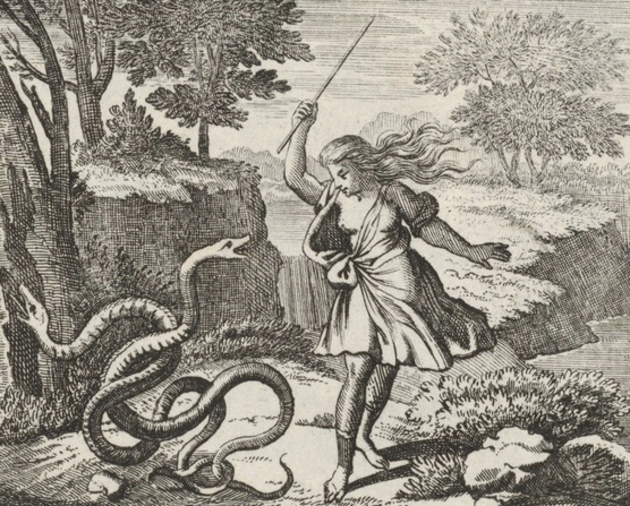
Tiresias, having transformed into a woman after hitting the snakes.
Egypt
The Greeks were not the only ones busy telling queer stories. In fact, just across the Mediterranean Sea, the Egyptians had their own tales.
These themes emerge right at the beginning of time, with Atum, the god who created the universe. Atum was thought to have been the first god, having created themselves, and was both part male and female. Through masturbation they created two offspring, also each partly male and female. It wasn’t until a few generations had passed that the separate ‘male’ and ‘female’ form began to exist.
Then there was Hatshepsut, who was not just a myth, but also a real pharaoh and perhaps the first record of a transgender person. She identified as a woman and used female pronouns, but unlike other female leaders of the time, in ancient art she is always depicted in men’s clothing and referred to as King. Her descendent, Thutmose III then tried to eradicate almost all historical reference to her, perhaps the first case of trans-erasure? Lucky for her, and history, she was not erased, and many see her rule as an important moment of LGBTQ+ History.
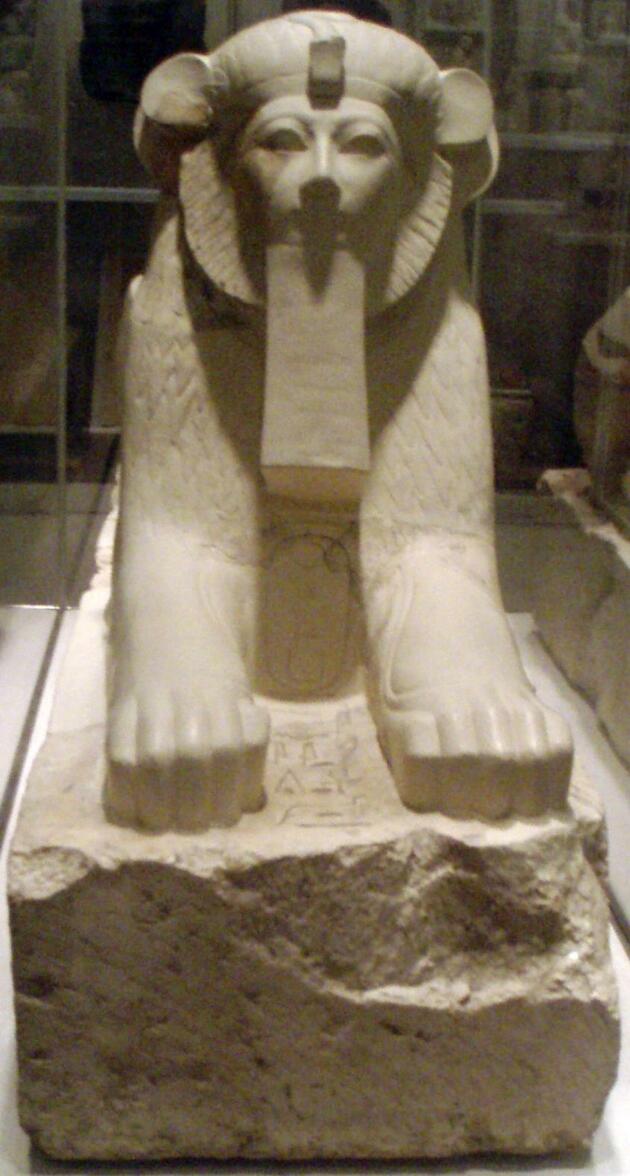
Sphinx of Hatshepsut. The round ears represent lioness and female features. The nemes headcloth and royal beard are however, defining male Pharaoh characteristics. Date 1479–1458 BC.
Hinduism
Historically, Ancient Hinduism has perhaps one of the most open views of gender, with fluidity between femininity and masculinity not just accepted but embraced and admired. For many of their deities, gender was not a closed or fixed construct, but in fact something that could shift and fluctuate throughout time. Their view of the world involves two realms, the material world and the spiritual world. Unlike the material world, the spiritual realm is boundless without limit or borders. As explained by the mythologist Devdutt Pattanaik within this spiritual space “Gender is fluid—god is goddess and goddess is god.”
“Gender is fluid—god is goddess and goddess is god”
- Devdutt Pattanaik
Gender, within Hindu tales, could be changed spontaneously with magic or in reaction to a person's character, as well as between lifetimes through reincarnation. It was not uncommon for Gods to manifest both genders simultaneously, such as Bahuchara Mata, or to have no gender at all, such as Braham, the ultimate and absolute spirit of the universe.
The fluidity of gender was also present in their epics. These were poetic verses written to convey moral codes, often involving stories of Hindu deities. One popular epic follows the story of Shikhandi, who although assigned female at birth, is recognized as male and has their gender changed by a Yaksha spirit. He then goes on to become a war hero, eventually dying in battle.
Many of these Gods are also represented as both male and female at different moments in time, including The Protector of the World, known as both Mohini and Vishnu. The great Vishnu now often described as gender-fluid, takes on the female form of Mohini, a supernatural enchantress with divine beauty and femininity. Mohini was known to madden lovers, including Lord Shiva, one of the supreme beings within Hinduism, who became "bereft of shame and robbed by her of good sense” in his chase for her. 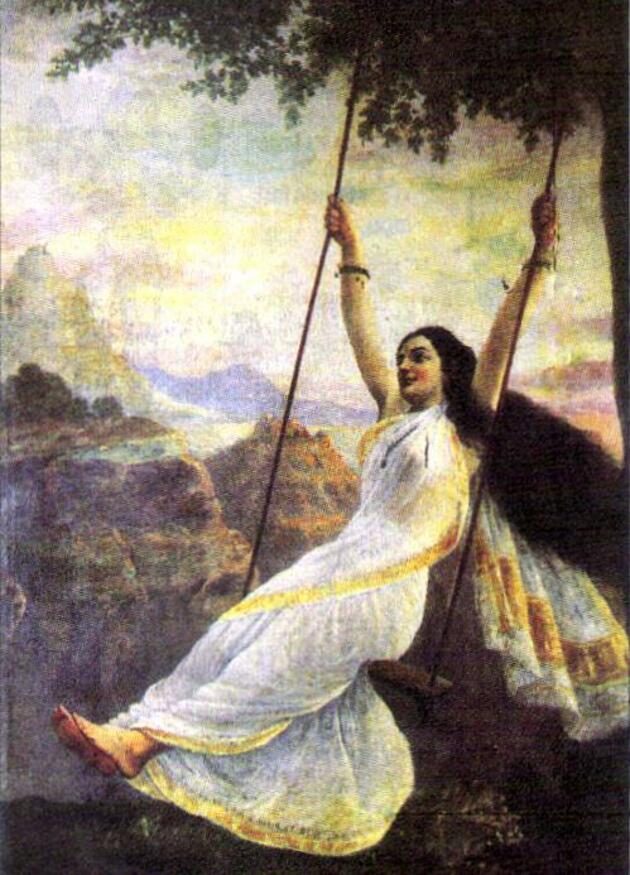
Mohini, the beautiful enchantress. Date: 1894
Vishnu was then reincarnated as one of the most well-known Hindu gods, Krishna, who symbolizes compassion, tenderness and love. Krishna then also changed into the female form of Mohini, and even married the deity Aarvan as Mohini. Just a day after their marriage, Aarvan dies and Mohini spends the day in mourning. Today, this story is still told and every year in the village Koovagam there is an 18-day festival celebrated by the transgender community where they re-enact Mohini’s mourning.
Today, this story is still told and every year in the village Koovagam there is an 18-day festival celebrated by the transgender community where they re-enact Mohini’s mourning.
It’s not just through the retelling of these tales that we can find LGBTQ+ narratives, but within ancient temples still standing today. The temples of Khajuraho and Mughal are some of the most famous examples of this. Within their medieval walls are carvings depicting homosexual sex, including scenes with multiple lovers involved at once.
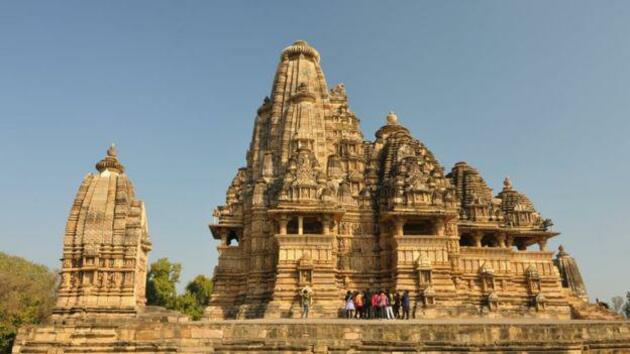
Khajuraho temples are a popular tourist destination
For the queer people of India, these myths are more than just interesting pieces of history, but a reminder that LGBTQ+ identities were once celebrated and embraced across their culture. It was not until the British arrived in India that these attitudes changed. Historian Harbans Mukhia explains "The British brought their own rules to India, including the Section 377 which banned homosexuality and made it a criminal act. This law [didn't] conform with India's attitude toward homosexuality."
These myths may be thousands of years old, but today they are as important as ever and have been central in the fight for LGBTQ+ equality in India. Keshav Suri a prominent LGBTQ+ activist often speaks out about how important it is for young people to be educated on this history, they told the BBC "I wasn't taught in school about Khajuraho and the presence of LGBT characters in our mythology. That has to change. Transgender people were considered gods and goddesses. They were great poets, artists and even administrators in medieval times."
“Transgender people were considered gods and goddesses. They were great poets, artists and even administrators in medieval times."
Keshav Suri
In 2018 homosexuality was decriminalised across India and Professor Mikah describes this as "we recovered what we had lost during colonial times - a more open attitude toward the LGBT community."
Philippines
Our final stop through mythological histories takes us to the Philippines. For more than a millennium before Spanish colonization, the Philippines followed a religion known as Anitism. Throughout this time gender was not split into ‘male’ and ‘female’, but instead mankind was viewed as a single species with multiple roles to play, irrespective of biological sex. This is evident in the role of the shaman within their communities, who always plays a feminine role regardless of their sex.
The Tagalog people of the Philippine’s have a particularly special story of creation, which involves the world being forged by a transgender couple. Lakapati, the Transgender Goddess of Fertility and Agriculture, is a deity who played a crucial in the creation of the earth. She is known for her kindness and married to Bathala, The Supreme God, who was also transgender. The story goes that Lakapati sensed Bathala had a feeling of emptiness, so made him a ball of clay. Bathala was so happy with the ball of clay that he worked to mould rivers and mountains onto the ball. Lakapati thought the ball so beautiful that she placed it in the sky and called it Earth. Today Lakapati still plays an important role as a modern-day deity, protecting the souls of LGBTQ+ people who have faced violence and death.
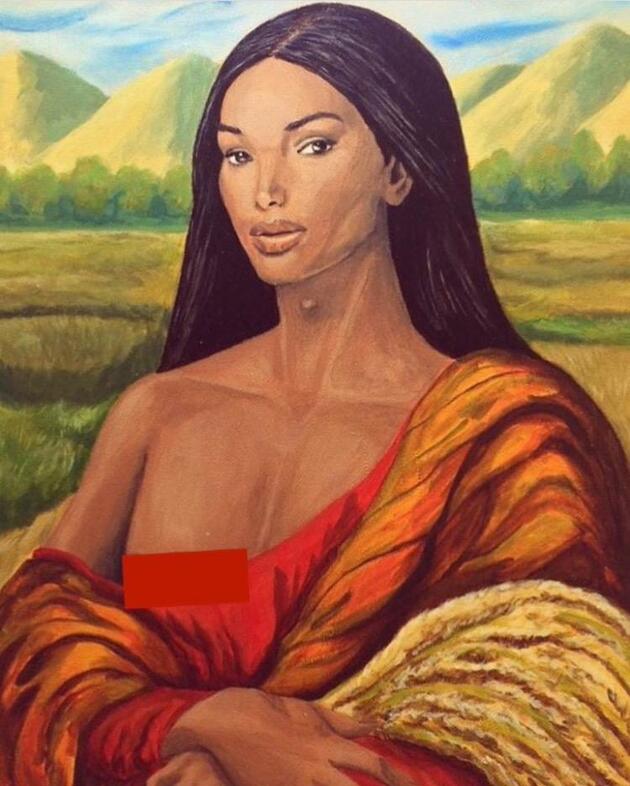
Lakapati, Transgender Goddess
The story of Lakapati and Bathala are an indication of a community that supported and cherished the trans community, and historical evidence backs this up. When the Spanish arrived in the Philippines in 1521, they recorded many cases of transgender women. They were accepted and seen as women in their community, often marrying men and living normal lives.
Today, the Philippines are one of the most LGBTQ+ friendly places in Asia and this is thought to be due, in part, to their historical views on the fluidity of gender and gender roles.
At a first glance, it may seem that these tales are no more than intriguing anecdotes. However, at a closer look we can see just how much power they hold. These myths are compelling tools in the fight for equality. They stand in defiance to narratives many LGBTQ+ people have been led to believe, reminding us discrimination is not the norm and queer identities are not new. Although these stories were told millenniums ago, the sacred tales of Gods who broke gender and heteronormative boundaries, will still offer a sense of belonging for many LGBTQ+ people today.

